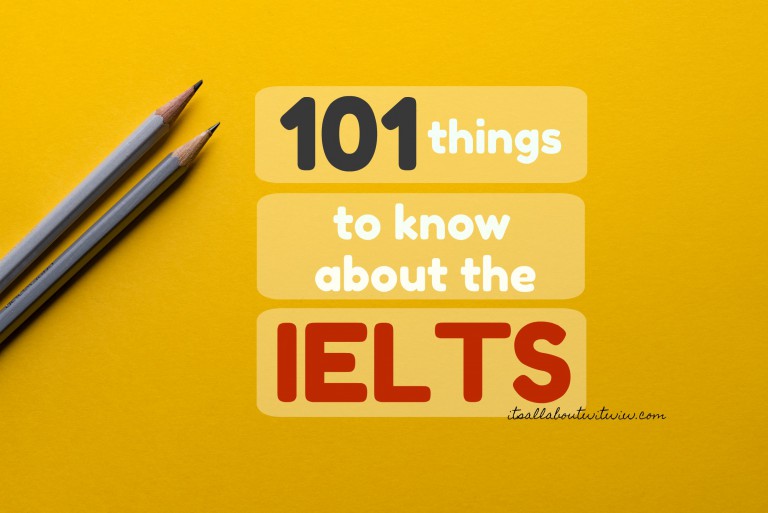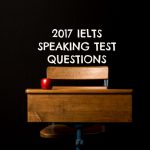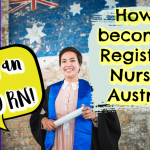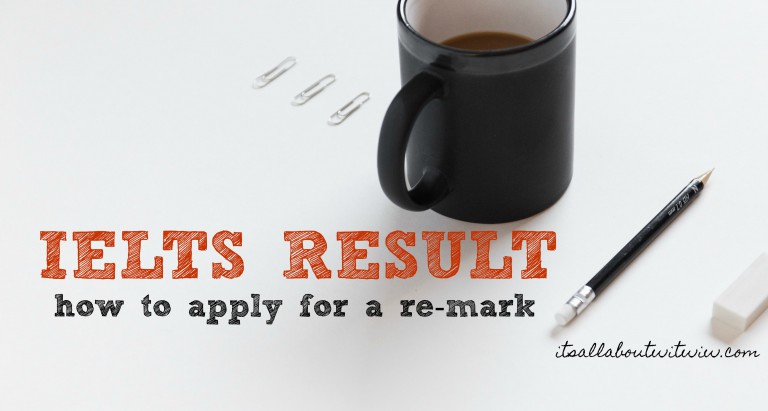I took the exam last 25th of March 2017. Apparently, I received my IELTS exam result 13 days after but it took me 2 months before I finally had the courage to share my experience, at least after receiving the final mark of the test.
Here, I will share 101 things you need to know about the IELTS test.
#1. IELTS test results will come out 13 days after the test.
That is probably the first thing you need to know about the IELTS. Little did I know that an SMS will be sent at 11:58 pm, the night before the actual result day. I can still imagine myself eyes half-opened suddenly got out of bed seeing that message from the IDP IELTS (International Development Program), again, at 11:58 PM informing me of my IELTS result. I wasn’t able to get back to sleep right away after that. I know it’s probably an automated system but it would be better if they would set the time early in the evening or the next morning instead. I’m not really too sure if it always happens like that but I have few friends who took the exam and they all got the results late at night.
Before I share the outcome of my exam, I just want to say that I am not an expert on this matter. The tips I will be mentioning are facts based on my personal experience. Another thing is that I took the test here in Sydney and there may be differences in other state or countries. Anyhow, I wrote this post for my personal reference but primarily is to share IELTS preparation, suggestions, and view of the exam for those who are also planning to take the test.

So, what is IELTS? and the reasons for taking the IELTS exam.
#2 IELTS stands for International English Language Testing System. It is one of the popular English language proficiency test. The reason behind taking the IELTS exam actually depends on an individual.
#3 Know your reason for taking the IELTS exam, before anything else. Mainly, it is for migration purposes to an English speaking country. A considerable number of people take the chance for study or employment purposes. For some, it is also a requirement for a professional institution in a particular country. While others take it simply for personal evaluation. In my case, I need it for my application as an RN or Registered Nurse in Australia.
What is the passing grade for the IELTS exam?
#4 There is no specific passing grade. Your target score depends on your reason for taking the exam as well as the requirement of the company or university you are applying to.
#5 The highest score for each section is 9. Frankly, I dare not to achieve that score.
#6 Read the IELTS scoring in details.
#7 IELTS has 2 types of exams which are, General and Academic.
#8 Academic test is primarily for people applying for higher education or professional registration. On the other hand,
#9 General test is for those who are going for secondary education, work experience, training programs, and migration.
#10 There are 4 sections of exam namely Listening, Reading, Writing, and Speaking for both Academic and General tests.
#11 The test type for Listening and Speaking are the same for both tests while
#12 in the Reading and Writing tests, the subject matter differs depending on which test you take.
#13 Check what type of exam you need to get before you book the exam date.
#14 Know your band score requirement.
As mentioned, I’m taking the IELTS as a requirement by AHPRA (Australian Health Practitioner Regulation Agency) so I can start my application as a Registered Nurse here in Australia. Click here to view my journey on becoming a Registered Nurse in Australia
My band score requirement is a minimum score of 7 in each component of the IELTS academic module. If you’d ask me how difficult is the test. I cannot range the difficulty for you. Easy and difficult are both subjective words. But in my case, since I need to have a minimum band score of 7 on each section, meaning the chances of having mistakes are lesser, therefore, I say it’s difficult. Considering the fact that it is also my first time to take this test.
#15 Difficult is subjective.
How much is the test? Here in Sydney, it costs
#16 330 AUD. Price may vary in other countries.
#17 Registration for the test can be done online. The steps will guide you through the registration and are quite easy to follow.
#18 A nearby test center is also advisable.
#19 Payment can be done electronically
#20 Make sure you receive an email confirmation with the test date and location.
How many months is the allotted time for review? Mind you, when I booked the test date, I knew I had to be serious right away.
#21 It depends on your capacity and your timeline. I actually planned to take the IELTS early January 2017. Occasionally, I started glancing on some IELTS reviewer at that time. To be honest, I had a hard time finding time to prioritize my review. I live with my 3 yr old son and my working husband and I don’t want to start enumerating all the stuff I need to do as a homemaker. So I did not do the review religiously. Not until I booked my exam on March 3, 2017 which was 22 days (to be exact) before my actual test date. I knew I should have booked it a little later, but I was also catching up on the expiry of some of my documents which made it a reason for me to take the IELTS right away.
#22 Book the test day ahead of time so you already have a goal in mind.
#23 Test dates are also quite fast to be fully booked, so I advised booking earlier.
#24 Set a minimum of at least 3 months of preparation.
What do you need to review? Well, it’s not actually a review.
#25 It’s more of a practice. Lots of it! As mentioned, there are 4 sections in the IELTS exam which are Listening, Reading, Writing, and Speaking.
#26 Speaking is usually held on a separate day either few days before the Writing tests, or days after.
#27 Speaking test is just 15 minutes, yet it feels endless. It was thelongest 15 minutes of my life. Click here for the full story of the Speaking Test.
On the other hand,
#28 Writing tests are more or less 4 hours continuously, with all the registration time and collection of valuables. Personally, I’ve spent a total of 6 hours in the test center. It’s definitely going to be a long day.
#29 Practice the test continuously for 3-4 hours without distraction and toilet breaks so you get the hang of it.
#30 Use the sample Listening and Reading answer sheets for you to have a rundown of the test.
#31 Listening and Reading answer sheets are back to back page in the real scenario, unlike the sample answer sheets that are separated so be mindful and double check the sheet you are answering. On the contrary,
#32 Writing sheets are separated and color coded into Task 1 and Task 2.
For the writing tests, I usedCambridge Practice Test IELTS by Vanessa Jakeman and Clare McDowell. It was referred to me by one of my friend in Singapore, Sir Brandon. Although there are a plethora of review materials and websites I recommend to find a reference that is really helpful and not redundant. Hence, these are the sites I find very worthwhile:
#33 IELTS Energy TV, Engvid, and IELTSLiz.
What happened on the actual test day? I was emailed that the registration time was 8 in the morning.
#34 Come to the test center early to avoid traffic or any delays. As usual, I was an early bird and I actually came to the test center an hour earlier.
#35 Don’t forget to take breakfast for a half a day energy. I took a light meal so I just (pretended to be) relaxed while waiting for the registration. After few minutes, IELTS candidates started coming.
#36 At exactly 8, registration started.
#37 Don’t be late.
#38 Remember to go to the restroom prior to registration for they won’t allow you to get out of the room once registered.
#39 Make sure not to forget your passport or whichever identification you used upon registration, or else they won’t allow you to take the exam.
#40 They will scan your index finger for you to be registered in their system and will
#41 let you sit on a specific table number based on their list.
#42 Belongings are being collected by the staff prior to registration.
#43 Leave other important valuables at home.
#44 Pens are not allowed as opposed to what has been said from the reading materials and videos I’ve read and watched.
#45 The center provides mechanical pencils and erasers.
#46 Watch is restricted so I was not sure what time exactly the test started.
#47 There will be a big timer flashed on the screen in front.
#48 Talking to other candidates are not allowed, just like any other tests.
From what I know, the Listening section would go first, followed by the Reading section, and lastly, Writing. But that wasn’t the case when I did mine.
#49 The test started with the Writing section. I wasn’t actually prepared for it since I was looking forward to the Listening section first.
#50 IELTS staff will give the writing answer sheets first.
#51 They would give you time to fill in the necessary details, like your name, test date, and test center number.
#52 Refer to the sticky paper on the side of the table where these details are indicated for your reference.
#53 After few minutes, they handed over the Writing booklets where the Writing tasks are indicated.
#54 You also need to write down the details on the booklet, which they will give you time as well to fill it up.
#55 Do not open the booklet until the examiner says so.
#56 Read the instructions carefully on the front page.
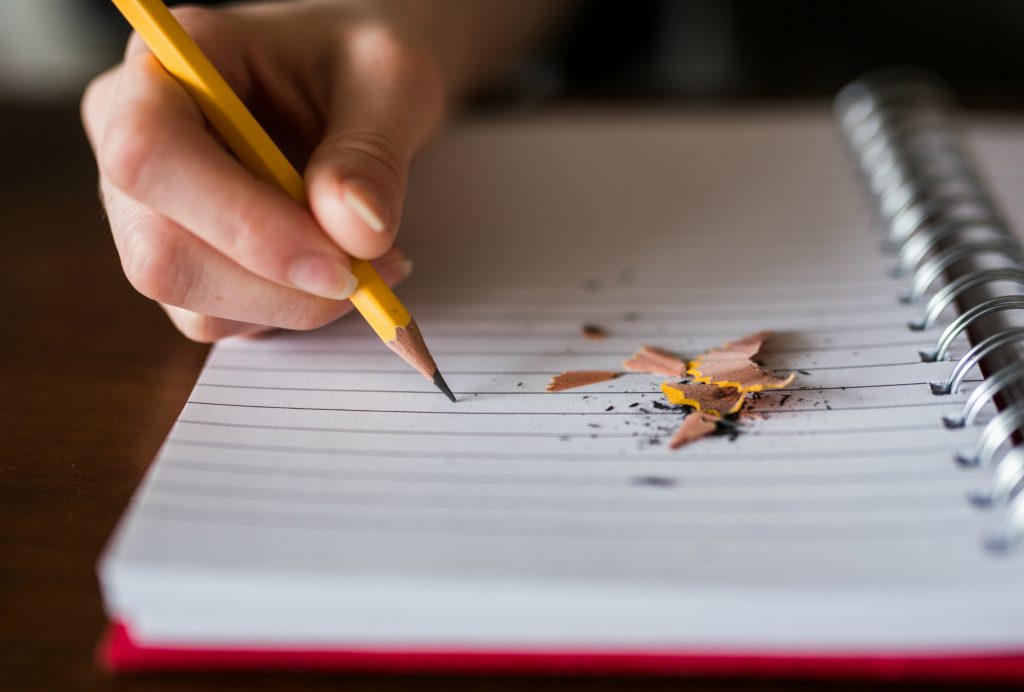
#57 Wait for the examiner to give the go signal to start the Writing test then you can go ahead and turn to the next page.
#58 The next page on the left side is the Writing Task 1.
#59 Writing Task 1 are either graphs, charts, tables, maps, or process.
#60 You need to explain it and write in 150 words.
#61 You can write a draft on the booklet paper and then transfer it to the answer sheet later on.
#62 Complete the first task at an advisable time maximum of 20 minutes including your brainstorming, proofreading, and transferring to the Writing answer sheet.
#63 Do this during practice soyou’ll most likely be familiar with the time frame and you’ll avoid cramming.
#64 There are 2 types of charts or graphs.
#65 Change over time graphs are line or bar graphs which you need to discuss the increasing or decreasing trend.While
#66 Static Charts are pie charts or tables which you need to tackle its highest and lowest range.
#67 Writing Task 1 introduction needs to write about 2-3 general sentences mentioning the overall trend looking at the beginning and end of the chart.
#68 Memorize an introduction template like “Just by looking at the trend, we can see a/that..” or “according to the chart…” This way, you can save time.
#69 Do not include too many numbers yet in the introduction as you will discuss it further in the body paragraph.
#70 The body paragraph must include the most important details and numbers.
#71 You may or may not write a conclusion for task 1. Others do not really advise to have a conclusion while some say it’s also important.
#72 Put a realistic conclusion based on the chart itself and not on your self-judgment.
#73 Paraphrase the words.
#74 Have a wide range of vocabulary. You will be needing this not just for the Writing section but in all aspects of the IELTS exam.
#75 Read the marking and criteria of Writing and Speaking sections for your reference.
#76 Writing Task 1 is about 30% of the whole Writing Task so do not waste the entire one hour allotted time for this task.
#77 Save 40 minutes of time for the Writing Task 2 which has a higher percentage of marks.
#78 Writing Task 2 topic is on the right page of the booklet.
#79 Topics could be anything under the sun so make yourself familiar with various topics. This time, you need to
#80 Write 250 words.
#81 You may write a fake research in Writing Task 2, provided you need to sound it like it is a real one and of course, make sure you use words that are related to the topic. You can start from “According to a research published by..” or “In a recent survey conducted by..”
My Writing Task 1 was about the population of people leaving Ireland and its unemployment rate from a specific period of time. The graph was actually quite confusing. As advised, practice a lot. My Writing Task 2 topic was:“Considering environmental issues, some people think that fuel charge increase can help solve environmental problems. Do you agree or disagree?”
Honestly, it’s not easy to think and write an essay within that span of time. Considering the fact that you can be given any kind of topic. I am just very thankful to God that He answered my prayer to give me a topic which I have an idea. I guess if that would be about sports, I would have limited thoughts. It’s better to read about diverse topics though.

#82 Reading section will follow shortly after the Writing test when the examiner collected all the writing booklet and answer sheets.
The examiner will first give the Reading booklet and you need to fill in the details like what you did in the Writing Section. After that, the examiner will hand over the answer sheets. As I’ve mentioned, this is a back to back answer sheet of listening and reading test. Make sure it is the reading answer sheet. Do not forget to write your details as well.
#83 There are 3 different kinds of long passages in the Reading Section which are about 2 pages each.
#84 There is a total of 40 questions that you need to answer within 60 minutes.
#85 It is advisable to spend 15 minutes on the first passage, 20 mins of the second, and 25 mins on the last passage because it gets more difficult on the second and third passages. Time is of essence.
#86 It may be multiple choice, fill in the blanks, and matching type.
#87 Be careful with questions that are True/False/Not given or Yes/No/Not given. If the instruction says write true or false, better write true or false. If you answer Yes or No instead of True or False, it will be marked wrong, and vice versa.
#88 You do not need to read everything and understand the whole passage. You don’t have enough time for that.
#89 Scan for the keywords (nouns and verbs). It is absolutely difficult especially for those not-so bookworm type of person like me. But again, practice is the key. Honestly, during this section, I struggled. I still have 15 questions that I haven’t answered, and I was left with 3 minutes. Imagine that? Believe me, I prayed to God to help me as I was really losing focus. All of a sudden, I was able to quickly analyze the questions and finished just in time. I really don’t know how I did it. God is good, right? 😉
Then, there’s the Listening Section:

I guess it was already past 12 at that time. I was feeling terrible headache. It’s probably the stress, the hunger, or the urge to pee. Like in the Reading section, the examiner will first give the listening booklet. Same thing, you need to write down your details on the booklet and on the listening answer sheet which is the back page of the reading answer sheet.
#90 Make sure you’re on the Listening answer sheet and not on the Reading answer sheet.
Wait for the go signal from the examiner before you turn over the page.
#91 The examiner will then play a CD containing the listening questions.
#92 The examiner will check first if the voice recording is audible for everyone.
#93 They can adjust the volume if you cannot hear clearly, especially if you are seated at the back. Just raise your hand and inform the examiner.
I initially thought Listening section was the easiest. Truth is, it’s really different on the actual test. It might be the anxiety that hindered my listening sensory.
#94 Focus and listen carefully as the speaker talks, or else, you might miss the words you need to right down.
#95 Listening section is a 40-minute test containing 40 questions, same as the Reading test.Questions can be fill-in the blanks, multiple choice and matching type questions.
#96 Double check your spelling and grammar.
#97 Do not forget to get your passport and belongings after the exam, no matter how exhausting it was.
I left the test center at about 1 pm and I did not even notice Rod and Marshall were waiting for me. I was terribly hungry after that.
#98 PRAY, most importantly. Pray for the most favorable result and thank Him for allowing you to experience a tiresome day yet you were able to survive it! When you’re done with the exam,
#99 rest. Now is the time to finally relax and be proud of yourself for experiencing this moment.
#100 If you fail to achieve your target band score, it’s ok. IELTS is just a prerequisite for application to migration or study. It doesn’t define who you are as a person. Whatever the outcome may be, remember that…
#101 He will always have His reasons.
Philippians 2:13
“For it is God who works in you to will and to act in order to fulfill his good purpose.”
So now, you’re waiting for my band score, right?
Well, this is the result I saw at 11: 58 pm…
Listening – 8
Writing – 7.5
Reading 7.5
Total: 7.5
Speaking? — Well, that’s another story. Click here for the full story of my Speaking Test. 😉
Please subscribe to our YT channel by clicking this link! 😉
Keep updated with our family stories by liking our FB page – Click here! 😉
Thank you for taking time to read this story. Feel free to comment for any questions and other topics you might want us to share and we will try our best to reply as soon as we can. 😉

